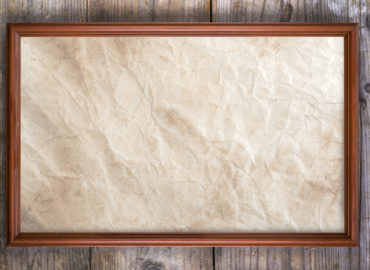The most common majors for people with the highest-paying jobs in art are all design-related. They are graphic and web design, interior design, animation, multimedia arts and sciences, and game art and design. If you are interested in a more creative field, a career as a director or manager may be a better option.
Home Automation is also a hot topic and a growing field, which necessitates technicians who are not only technically skilled but also creative. Therefore, a career in home automation can be very rewarding both financially and creatively.
These positions typically require a bachelor’s degree, although some employers prefer a master’s degree. Here is a short list of possible careers with an art-focused degree.
- Creative Director / Most Common Major: Graphic Design
- Design Director, Interior Design / Most Common Major: Interior Design
- Design Manager / Most Common Major: Graphic Design
- Visual Designer / Most Common Major: Graphic Design
- Animation Director / Most Common Major: Animation
- Art Director / Most Common Major: Graphic Design
- Multimedia Artist / Most Common Major: Multimedia Arts & Sciences
- Interactive Media Designer / Most Common Major: Interactive Media Design
- User Interface Designer / Most Common Major: Graphic Design
- Game Artist / Most Common Major: Game Art & Design
Some of the highest-paying art jobs are in management and administration. For example, an art director at a museum or gallery can earn an average salary of $62,000 annually. A curator can earn an average salary of $58,000 per year. A museum director can earn an average salary of $73,000 per year.
If you are interested in a teaching career, you may want to consider becoming an art professor at a college or university. These positions typically require a master’s degree or higher. Art professors can earn an average salary of $64,000 per year.
What art degrees pay the most?
- Art Director. Median Salary: $94,220
- Producer & Director. Median Salary: $74,420
- Landscape Architect. Median Salary: $69,360
- Video Editor. Median Salary: $63,780
- Graphic Designer. Median Salary: $52,110
- Drafter. Median Salary: $56,830
- Art Curator: Median Salary: $54.000
- Interior Designer: Median Salary: $56,000
How AI is transforming the creative industries?
Technological disruption is often assumed to lead to job losses, but these fears are regularly overblown. For example, in the creative industries, such as music, AI is more likely to help artists make new kinds of art rather than replace their jobs. In home automation, for example, the installation of new technology can be used to create more efficient work or home processes and often leads to the creation of new positions or less work for the homeowner.
Artificial intelligence can be used to generate new ideas for songs, artwork, or other forms of creative expression.
- It can help identify patterns in data that may be useful for marketing or other purposes.
- It can be used to create or enhance virtual reality experiences.
- It can help automate art production by creating 3D models or digital paintings.
- It can be used to create new types of audio or visual effects.
How do emerging technologies affect the creative economy?
They have the capacity to promote new and meaningful feelings, skills, and understanding, which can make content more powerful than when presented through traditional media. In addition, as the cost of immersive technology decreases, creators are enabled to redefine storytelling and narrative content in an entirely new medium.
AI can be used to create realistic 3D models, which can then be used in virtual or augmented reality experiences. This has the potential to revolutionize how we consume media and entertainment. In the future, we may not just watch a movie but be able to step into it and explore the world firsthand.
AI can also be used to create realistic 3D models of people, which can then be used in movies or video games, potentially making these experiences more realistic and immersive.
Why are creative industries important to the economy?
The creative economy has become an essential element of economic development. It presents a new opportunity for developing countries to diversify their economies and leapfrog into new, high-growth sectors of the global economy to achieve the Sustainable Development Goals.
The creative economy drives economic growth, employment, and export earnings. It comprises industries that are involved in the production and distribution of creative goods and services, including advertising, architecture, art and antiques, crafts, design, fashion, film and video, music, performing arts, Publishing, R&D in the creative industries, software, toys and games, and TV and radio.
In developed countries, the creative economy accounts for a significant share of GDP and employment. For example, in the United States, the creative industries account for 4.3 percent of GDP and 30 million jobs, while in the United Kingdom, they account for 8.9 percent of GDP and 3.4 million jobs.
In developing countries, the creative economy is often an essential source of export earnings and foreign investment. For example, in Brazil, the creative industries account for 2.6 percent of GDP and 4 percent of exports, while in India, they account for 3 percent of GDP and 8 percent of exports.
The COVID-19 pandemic has had a devastating impact on the global economy, and the creative industries have been hit particularly hard. In the United States, for example, nearly 2 million jobs have been lost in the creative industries since February 2020.
Despite the challenges posed by the pandemic, the creative industries are essential to the global economy and, will continue to be a significant source of economic growth, employment, and export earnings in the years to come.
What art majors make the most money?
In conclusion, whether it’s working in home automation, fashion with clothing or jewelry, or in a role as an art director at an ad agency, being an artist does not have to mean that you will be a “starving” one. Instead, change your thoughts to being among “Prosperous Artists.” They are making a living, and a great one at that. There are many ways for an artist to make money. It takes thinking outside the box and not being afraid to try new things, but it is possible!
There you have it! These are just a few ways that art majors can make money. So, what are some ways you make money if you’re an art major?





